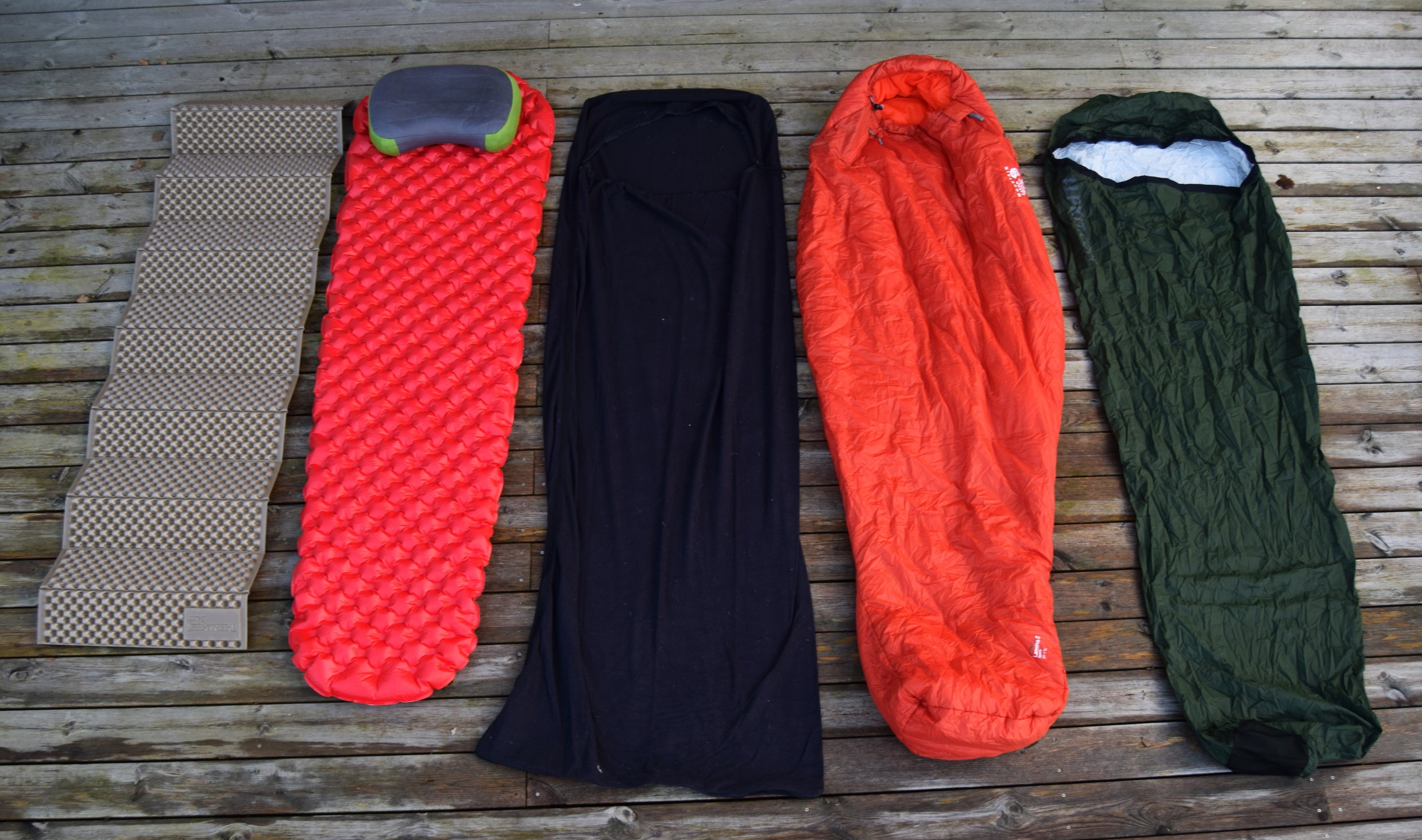"What sort of bicycle are you gonna be using?"
A surprising number of people have asked me about the bicycle I'll be riding and the gear I'll be hauling along with me. The picture of the bicycle above isn't actually kitted out the way it'll be on the actual trip. I just slammed whatever I had lying around into the panniers for the sake of the photo, and to be honest, I think it's going to be a tight fit once I start packing for real. But gearing up is, whether you like it or not, a big part of the preparation for a trip like this. And for me, the preparation needed prior to a trip builds tension and excitement for what's to come, so here it is!
The Bicycle
I bought my ride second hand from a guy in Aarhus, for the equivalent of 200 Euros. I didn't know when I bought it, but apparently it's a Trek SU 2.0. What I did know was that it had the features I needed, and that it was fairly cheap, so I went for the 6 hour drive and bought the bike. It's been modified quite a bit from its original state, so that it fits my needs better. Though I would have liked a steel frame for the durability, they are really expensive. So I've gone for a compact aluminium frame instead. It's equipped with 26 inch wheels, which is the standard wheel size in most parts of the world (though not in Denmark...). The tyres are heavy duty anti-puncture by Schwalbe. It's got mechanical disc brakes for durability and stopping power. Though rim brakes would be easier to maintain, the wear they cause on the actual rims have pushed me in the direction of disc brakes. The bike has been fitted with drop bars to give me a wide variety of riding positions, and the saddle has been switched to a Brooks B17 for comfort. I've fitted both rear and front racks to accomodate my panniers (Ortliebs), and I've added a bar bag for my camera. Navigation will be done mostly using offline maps on my phone, and I'll be bringing a cateye computer for some basic stats. As with the rest of my gear, durability has been prioritized.
Sleep
I've come to value sleep quite highly, and for that reason I've cashed out a fair bit in this department of things. I've aimed for a comfortable, versatile yet lightweight system. I've got a Salewa tent to protect me from the elements, and I'm bringing along a lightweight bivvy bag aswell for when I'm too tired to bother with the tent, or if a more discreet solution is needed. To keep me warm I've got a lightweight synthetic sleeping bag made by Mountain Hardwear (Lamina z Spark) that should keep me warm almost down to the point of freezing. If the sleeping bag is either too warm or too cold, I've got a thick fleece liner that can either be added to the system or used by itself. I've gone for a synthetic bag over down due to the ease of maintaining it, and the insulating properties in damp conditions. I'm bringing two sleeping pads with me aswell. I'm taking the trusty Therm-a-Rest Z-lite foam pad, and a super comfortable inflatable mat made by Sea to Summit (comfort plus insulated). I'm bringing the foam pad mostly as a backup for the inflatable, in case I get a puncture I can't repair. Lastly I'm going to be using an inflatable pillow also made by Sea to Summit.
Cooking
Though I'm honestly not much of a cook, I've decided on bringing a full set of Trangia pots, pans and stoves. That way I've got the opportunity to use both alcohol and gas cannisters as fuel. The reason for hauling along all of this is bringing down costs in the long run, and I sort of enjoy a hot meal after a hard days work. Helps in keeping you warm aswell on colder nights. Obviously I'll be bringing a bit of cutlery and a cup aswell. In certain parts of the world, such as Southeast Asia, cooking might prove to be more expensive than simply buying food on the street.
Of course I will be bringing along a lot more stuff such as clothes, bottles, headlamps and also my computer and a camera for the sake of this blog. I'm also bringing a solar-powered battery (thanks Martin!) for charging my electronics. For those of you interested, I'm simply using a Nikon D3300 with a polarizing filter and a bit of editing for my photos. I'll be bringing the 18-55 mm kit lense, a 50-200 mm zoom, and a 35 mm prime. Apart from a small tripod, there's really not much more to it. It's a basic setup, but it gets the job done. I haven't actually cycled to Indoneisa before, so this entire post is honestly just me guessing what gear will be needed, trying to convince myself that I'm prepared. I'll probably be switching out pieces of gear as I get the hang of what works and what doesn't, but why not try and get it right from the beginning?
I'm cycling for the Association for Greenlandic Children. They're working for a great cause - please consider donating through the link below!

